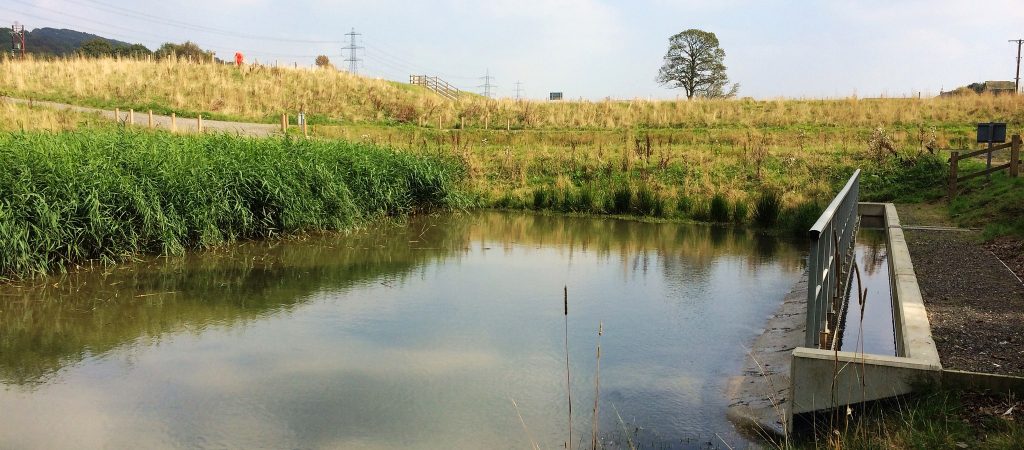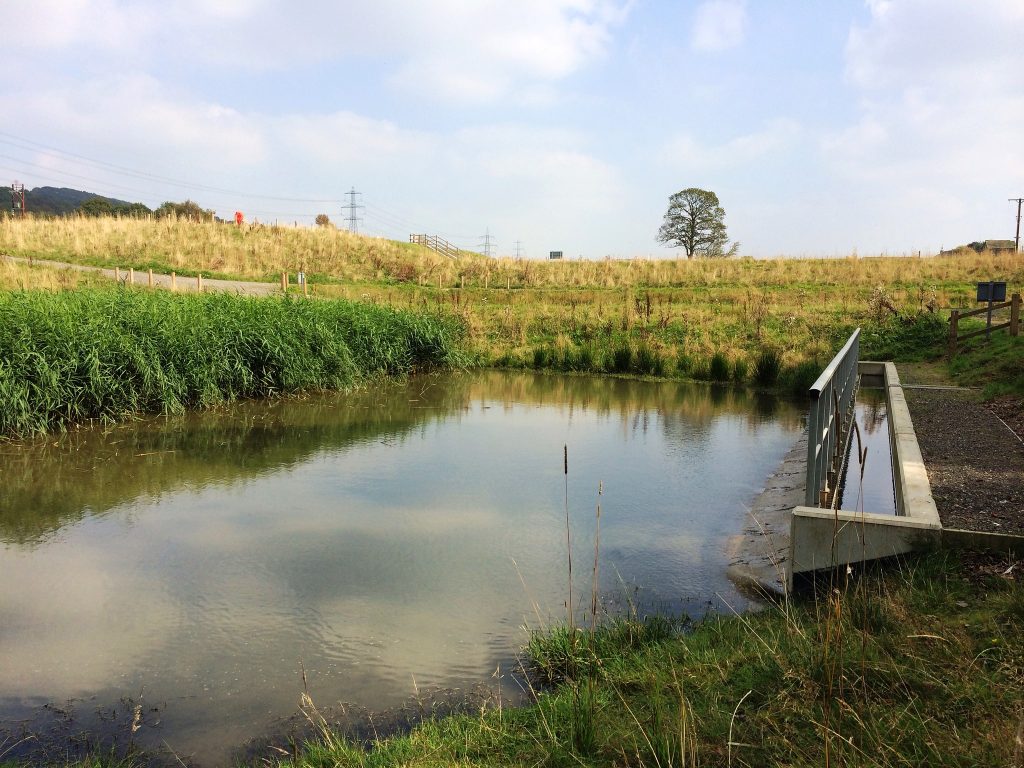
How does a treatment scheme work?
Typically, to treat mine water in similar situations, the Mining Remediation Authority’s approach is to build a pumped-passive treatment scheme and this is the approach at Thorpe Hesley.
Pumped-passive treatment requires no energy or chemical input through the treatment process, but requires energy to be consumed to pump the water out of the workings. Natural oxidation, settlement and reed bed polishing is used to reduce iron levels in the mine water to acceptable levels for discharge.

Passive treatment schemes involve capturing the mine water from the source, whether this is from a surface discharge or, in the case at Thorpe Hesley, pumped from the mine workings. The water is then transferred to a cascade stairway which will oxidise the iron in the water and begin the process for the iron particles to separate from the water.

Horden Mine Water Treatment Scheme’s dual cascade system (Northumberland)
After the mine water has left the cascade, the water flows into settlement ponds to allow the iron particles to settle; the majority of the iron removal typically happens here. The iron solids that have settled out are non-toxic and are commonly referred to as ochre.

Settlement Ponds situated at the Horden site (Northumberland)
The settlement ponds are drained on a regular basis (every 1-5 years depending on sludge levels) to allow the collection of the ochre/iron solids that have settled at the bottom. The collected sludge or ‘ochre’ is placed in the sludge drying beds to provide an area where the water content can decrease before the dried material can be moved from site. These are then recycled and reused as much as possible; in the last year, The Coal Authority recycled or reused 89% of these solids.

Sludge drying bed at the Lynemouth Mine Water Treatment Scheme
The water then flows into reed beds which act as natural filters to take away any remaining iron particles within the treated water. As well as acting as the third stage in the treatment process, the reed beds also provide new diverse habitats for wildlife. It is hoped that members of the community will be able to make good use of tracks around the new reed beds, and will enjoy seeing wildlife alongside the final stages of the water treatment.

Once the water has passed through the reed bed, it is then discharged into the receiving watercourse as treated water.